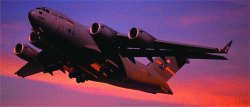Contractors are set to benefit from a potential Iraqi conflict with increase in munitions and spares orders
Much of the defence industry's direction in 2003 will be guided by whether the USA goes to war with Iraq. Any conflict throws up lessons that need to be absorbed by operators and manufacturers alike. In the short term, a war is also likely to benefit the three big US defence contractors - Boeing, Lockheed Martin and Raytheon - as increased orders for munitions and spares flow through. Medium- and longer-term effects will obviously take more time to become apparent, although there are unlikely to be big increases in the number of platforms to be acquired.
US industry will also benefit from the biggest-ever boost in defence spending. The $37.5 billion budget hike for 2003 is larger than most other countries' defence budgets, but how much will directly benefit industry and how much will be used to address issues such as service personnel pay and conditions remains to be seen.
This year is likely to be make-or-break for two fighter programmes that suffered mishaps at the end of 2002. Despite the loss of a development aircraft in late November, the Eurofighter will start to join the four partner nations' air forces in 2003. The next step will be training pilots and developing operational tactics. Meanwhile, the Lockheed Martin/Boeing F/A-22 Raptor industry team and the US Air Force will have to overcome the programme's latest setback - the revelation that development is over-budget and behind schedule. Cancellation is being threatened if there are further overruns and the renaming of the Raptor - from F- to F/A-22 - may not be enough to save the programme from its critics.
Asset shortfallFighter programmes are the glamourous end of the defence business, but it is shortfalls in more mundane assets, such as tankers and transports, that must be addressed urgently, particularly in Europe. The November 2002 NATO summit in Prague tasked Germany with arranging the lease of 16 large strategic transports and asked Spain to run an in-flight refuelling aircraft pool.
There is nothing new in these needs - both were highlighted after NATO's operations over Kosovo in 1999 and both were agreed as procurement priorities during the alliance's summit that year in Washington DC. In theory, the Prague meeting should ensure some acquisitions get under way, but the lack of progress since NATO's previous summit three years earlier does not augur well.
Industry observers see an irony in Germany being charged with leasing 16 transports, because Berlin's budgetary mismanagement is the reason that Europe's large transport - the Airbus Military A400M - is no further ahead than it was 12 months ago. A development contract was signed in January 2002, but could not become active until Germany had funded all 73 of the A400Ms it had committed to buy. What effect the German delay will have on the A400M's long-term prospects is not clear, but the aircraft's in-service date will inevitably be pushed back enough to miss several key export opportunities. This will benefit the Boeing C-17 - likely to make up most of NATO's 16 leased aircraft - and the Lockheed Martin C-130J Hercules. Key participants in the A400M programme have already had discussions with the two US manufacturers.

Leasing aircraft, like buying them, requires money and, despite the USA's lead, few countries have increased their defence spending - and those that have by only a small margin over inflation. In many countries, including some the USA has approached for help in its war on terrorism and to take part in action against Iraq, money allocated to defence continues to shrink. While that is the case, grand acquisition and modernisation plans will remain only plans.
Source: Flight International























